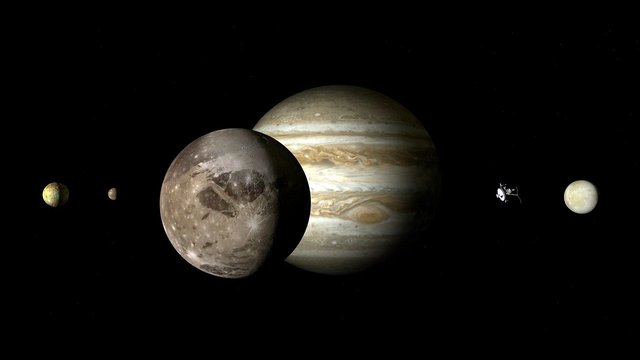They discover 12 new moons revolving around Jupiter
They discover 12 new moons revolving around Jupiter
The one that is the largest planet in the solar system already has 79 natural satellites.

A huge and unexpected surprise: a team of astronomers from the Carnegie Institute for Science has accidentally discovered 12 previously unknown moons in orbit around the giant Jupiter.
This brings the total of known Jovian moons to 79. The newly discovered satellites further increase the difference of Jupiter as the planet with the most moons in our entire solar system, and that space around Saturn is quite crowded.
The team, led by astronomer Scott S. Sheppard, was using ground-based telescopes to search for evidence of the mysterious Planet Nine, a hypothetical large ice planet that could exist beyond the orbit of Neptune, the most distant planet in the solar system.
"Jupiter was simply in the sky near the search fields where we were looking for extremely distant objects," said Sheppard.
So, while searching for this mysterious planet, the experts stumbled upon a dozen new moons orbiting Jupiter. 12 moons circling the planet in a suicidal orbit that will inevitably lead to violent destruction at some point, experts say.
The team first glimpsed the moons in March last year from the Cerro Tololo Inter-American Observatory in Chile, but it took more than a year to confirm that the bodies were in orbit around the gas giant. "It was a long process," Sheppard clarified.
The recent arrival of these natural satellites brings the total number of Jovian moons to 79, more than those that are known to surround any other planet in our cosmic neighborhood.
Nine of the new moons belong to an external group that orbits Jupiter in retrograde orbit, which means that they travel in the opposite direction of the planet's spin. It is believed to be the remains of three parental bodies that broke in collisions with asteroids, comets and other moons. Each one takes around two years to surround the planet.
Two more of the moons are in a group that rotates much closer to the planet, in orbits, which travel in the same direction as Jupiter's turn. Most likely fragments of a larger moon that broke in orbit. It takes almost a year for this pair of moons to complete a circle around Jupiter. (Which direction the moons circle around the planet depends on how they were captured for the first time by Jupiter's gravitational field).
Valetudo
Astronomers describe the twelfth new Jovian moon as a "weirdo." Less than a kilometer wide, the small body surrounds Jupiter in a prosperous orbit but at a distance that means it crosses the path of other moons. Scientists have tentatively named this moon Valetudo, by the great-granddaughter of the Roman god Jupiter, the goddess of health and hygiene.
"Valetudo is like driving on the wrong side of the road," said Sheppard. "It is moving in a protracted orbit while all other objects at a similar distance from Jupiter are moving in retrograde orbit, therefore, frontal collisions are likely."
Sheppard, whose report is not yet available in a peer-reviewed journal, suspects that Valetudo is the final remnant of a moon that was once much larger and was destroyed by collisions. The team is carrying out computer simulations to try to find out when Valetudo could collide with a retrograde moon.
"This simulation takes a few months to execute and we expect the answer to be between approximately 100 million years and a billion years, although it is a lot in human time it is not so much in astronomical time," said Sheppard.


